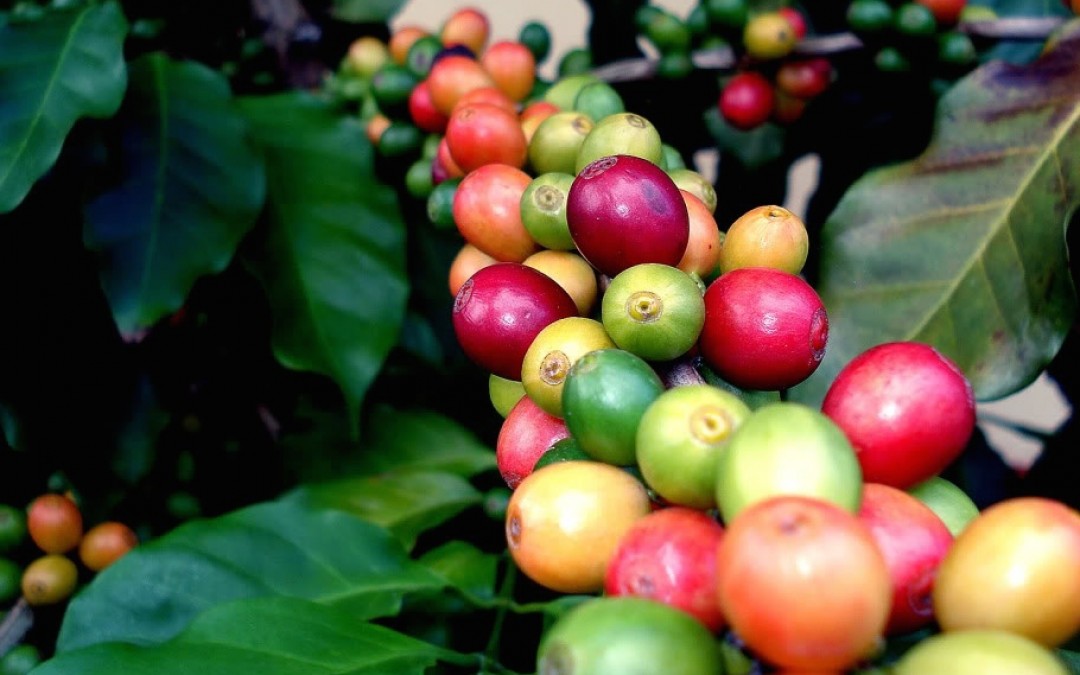Let’s talk green coffee.
First, this is a vegetable post. Not those savory notes in your Ethiopian or Panama coffee, but peas and carrots. What I mean is this is a fundamental post, not what I would consider dessert. After establishing the basics though, we will be able to talk about that beautiful brown coffee as a crop, as a variety, as a commodity. Plus, if you’re like me, there’s a little nerd-ing out along the way.
I want to focus on green coffee, the un-roasted nut. We’ll work through how it obtains it’s flavors, and get a little into varietals. Coffee is a complex interaction between families and regions, weather and water. With every specific journey, it says something a little different. So to start you on coffee’s story we’re considering origins and flavors.
Though its easy for me to just jump right in, let’s start at the beginning and work our way from there.
Coffee Arabica verses Coffee Robusta
Take what you know about coffee and toss it. That caffeine-infused beverage you like to Instagram overly-filtered photos of is straight from the unfiltered earth.
Coffee, or Coffea, is a classification of a plant with many types of species, some that we consume and some we don’t. What’s important, though, is that there are seeds resting within the center of a tiny cherry; seeds that are very important to us.
Coffea arabica is the most widely produced and consumed species of coffee. Another species that may be familiar is Coffea canephora, known as Robusta. Robusta is majoritively commercial grade coffee based on its lower quality.
FUN FACT: coffea stenophyla has a purple cherry (instead of standard red) and long narrow leaves. There are other wild types found in Africa and there have been experiments in working with alternative cultivars or cross-breeding wild cultivars with commercial types.
How does coffee get its flavor?
How do you describe your coffee? Vegetables? Cholates? Fruits? Bold or Bright? Coffee has flavor, but how? This comes from a variety of factors, none of which is a syrup, at least not ours.
Green coffee, generally, embodies flavor from three factors: Altitude, Region, and Varietal. Environmental factors also play a part (sunlight, soil, etc.) but those are harder to quantify.
Let’s start with Region
This is the most important as region has the most prolific impact on flavor in coffee. This is why we label our coffee origins, so you can get an idea of what to expect.
This isn’t just because regions have naturally different tastes, but because the differences in altitude, climate, soil, sunlight, and even lineage to just name a few. This is why South American coffees may taste a little similar (nuttier, chocolatier) than African coffees (fruitier).
FUN FACT: Ethiopia is the birthplace of coffee and its unique flavors in coffee are typically attested to the crop’s long lineage there.
Altitude
In relation to the last point, the altitude also provides a standard for climate, exposure to sunlight, and rain for the coffee but also relates to the density of the bean. The harder the coffee beans, the more flavor it has a tendency to have. Coffee typically thrives and 3,000-6,000 feet or more above sea level. Most ascribe the best altitudes are 4,500-6,000 feet.
Varietal/Cultivars
So we discussed earlier physical differences in coffee species (Robusta being bigger, monotonous, etc.). Well, there are physical differences in Arabica varietals, impacting what we taste in our coffee.
In scientific terms: Coffea arabica var. typica. Here “var. typica” infers the Typica variety of Arabica coffee. “Typica” is the standard varietal, or scale for other varieties. From this lens, varieties are either mutations (changes in the species/plant, small or large) or hybrids (natural or artificial crosses between varieties or species).
There are also cultivars. They are cultivated varieties meaning they are produced by man-made mutations rather than natural ones. According to the Specialty Coffee Association for America, most of our popular varietals are actually cultivars (link). For the sake of clarity, we will refer to cultivated varieties and natural varieties as one.
One varietal we see pretty often is Bourbon. Bourbon has less conical shape than Typica trees and more secondary branches (to give you some ideas on physical differences).
At this point you’re either nerd-ing out, like me, or getting a little lost.
What this means for us, the consumer, is that varietals are another way we can categorize our taste preferences. You may find that there’s a variety you might like and it can bring a balance or particular body you love to a region, through the varietal.
For example, you may have a Bourbon varietal from Peru and another from El Salvador. You will notice some similarity because the bean is the same, but differences, induced from soil and climate, will be hard to ignore.
Gesha is THE world-renowned varietal, known among roasters and enthusiasts as the most intense and complex coffee. First coming into the spotlight from Panama, but originating in Ethiopia, it is now sold selectively and at skyrocketing prices.
So this was just an intro, a taste into varieties and flavor profiles of regions. Let us know if this sparked your interest for anything about green coffee. If you haven’t gotten your daily dose you can see Coffee Research’s information on varietals (in specificity)
http://www.coffeeresearch.org/agriculture/varietals.htm or at Specialty Coffee Association of America’s Botanist guide http://www.scaa.org/?page=resources&d=a-botanists-guide-to-specialty-coffee
I also found this. It’s a great, factually supported blog about coffee as a plant. It talks about its susceptibility to disease, hybrids between C. canephora (immune resistant) and C. arabica, and just general distinctions between species.

